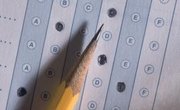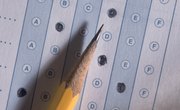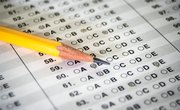The SAT essay is scored independently by two readers on a scale from one to six, and these two scores are combined for a possible total score ranging from two to 12. The only way to receive a zero on the essay is to leave the section completely blank. The essay score is part of the SAT's writing component, which includes three sections; the essay is the only part of the test's writing portion that involves actual composition.
Scoring the Essay
The SAT writing section is scored from 200 to 800 points, based on the combined results of the essay and multiple-choice questions. According to the College Board, the essay portion of the writing section counts for about 30 percent of the total writing score.
Figuring out the Composite Writing Score
Refer to College Board's "Getting Ready for the SAT" booklet for the official conversion chart showing the relationship between the essay score and multiple-choice writing section score. For instance, an essay score of eight and a multiple-choice score of 27 yields a composite writing score of 520 points. The difference of just one point on the essay can bring the writing section composite score up or down by 10 to 20 points, so writing a good essay can really help bump up your overall SAT score.
Related Articles
References
Writer Bio
Since earning her B.S. in journalism and M.S. in publishing, Allie Benjamin continues to write and edit educational content for various platforms. She also has spent time as a resume writer/editor. Based in D.C., Benjamin currently educates high-school students in grammar and writing skills.











